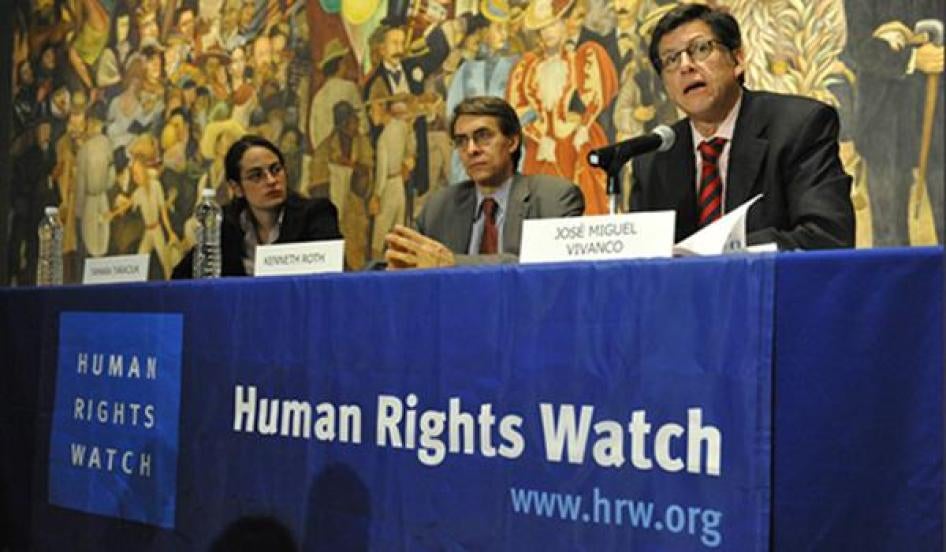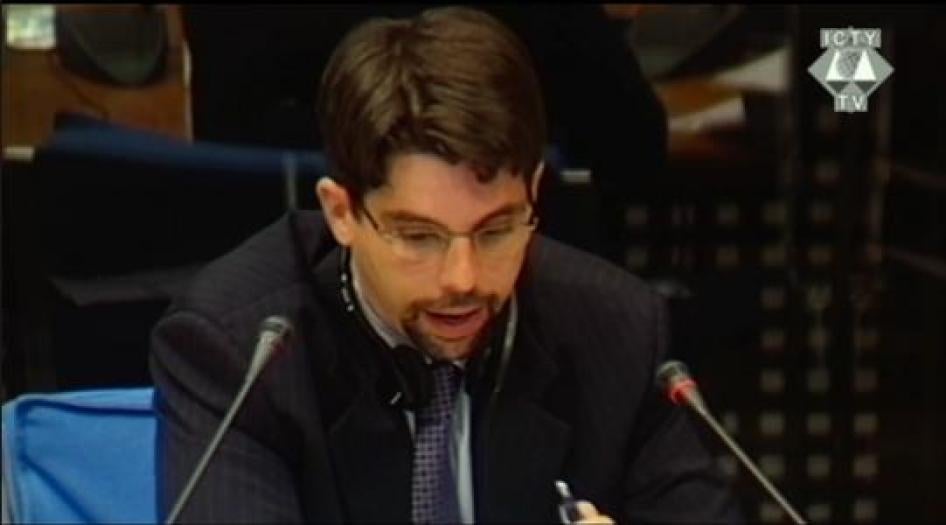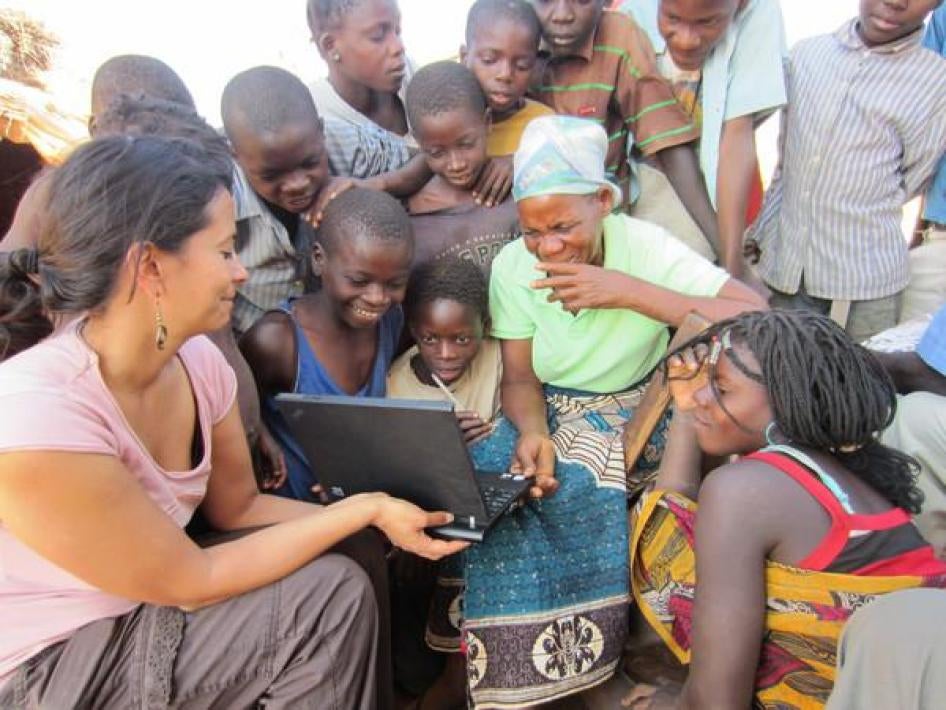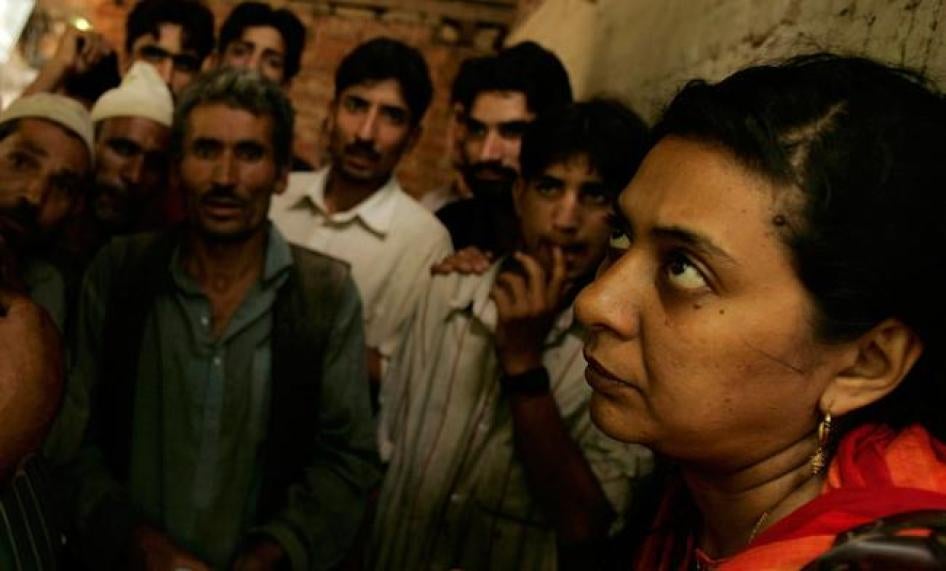History
Human Rights Watch began in 1978 with the creation of Helsinki Watch, designed to support the citizens groups formed throughout the Soviet bloc to monitor government compliance with the 1975 Helsinki Accords. Helsinki Watch adopted a methodology of publicly "naming and shaming" abusive governments through media coverage and through direct exchanges with policymakers. By shining the international spotlight on human rights violations in the Soviet Union and Eastern Europe, Helsinki Watch contributed to the dramatic democratic transformations of the late 1980s.
Americas Watch was founded in 1981 while bloody civil wars engulfed Central America. Relying on extensive on-the-ground fact-finding, Americas Watch not only addressed abuses by government forces, but applied international humanitarian law to investigate and expose war crimes by rebel groups. In addition to raising its concerns in the affected countries, Americas Watch also critically examined the role played by foreign governments, particularly the United States, in providing military and political support to abusive regimes.
In rapid succession in the 1980s, Asia Watch (1985), Africa Watch (1988), and Middle East Watch (1989) were added to what was then known as "The Watch Committees." In 1988, the organization formally adopted the all-inclusive name Human Rights Watch.
New human rights challenges in the 1990s led to important innovations in the work of Human Rights Watch. Its reporting on the 1991 Persian Gulf War for the first time addressed violations of the laws of war in bombing campaigns. Advocacy targets were expanded to give greater attention to the United Nations and regional bodies such as the European Union. "Ethnic cleansing" and genocide in Rwanda and the Balkans prompted the need for both real-time reporting of atrocities and in-depth documentation of cases to press for international prosecutions, which became possible for the first time in the 1990s. Human Rights Watch has supported and critiqued the international tribunals for the former Yugoslavia and Rwanda, sought prosecutions of abusive leaders including Augusto Pinochet of Chile and Hissene Habre of Chad, and played a prominent role in the drafting of the Rome Statute to create the International Criminal Court.
At the same time, Human Rights Watch broadened and strengthened its work on the rights of women, children, refugees, and migrant workers, bringing a human rights perspective to such issues as domestic violence, trafficking, rape as a war crime, and child soldiers. The organization found new ways to investigate rights abuses in closed societies such as Saudi Arabia and North Korea. It helped spotlight previously ignored topics such as the rights of gays and lesbians. It examined the international arms trade and the role of business in human rights, producing ground-breaking studies, for instance, on rights abuses in the oil, gold, and meatpacking industries.
Human Rights Watch in 1997 shared in the Nobel Peace Prize as a founding member of the International Campaign to Ban Landmines, and it played a leading role in the 2008 treaty banning cluster munitions.
The 21st century has brought new challenges. The September 11, 2001 attacks and their aftermath highlighted the need for new forms of pressure on terrorist groups and their supporters and close monitoring of counterterrorism laws, policies, and practices that infringe upon basic human rights. The HIV/AIDS pandemic led to the creation of a Human Rights Watch program devoted to human rights and health.
Human Rights Watch is increasingly applying its research methodology to economic, social, and cultural rights, particularly in the areas of education and housing. Human Rights Watch has also begun using statistical research, satellite photography, and bomb-data analysis, among other new methodologies. Combining its traditional on-the-ground fact-finding with new technologies and innovative advocacy keeps Human Rights Watch on the cutting edge of promoting respect for human rights worldwide.



